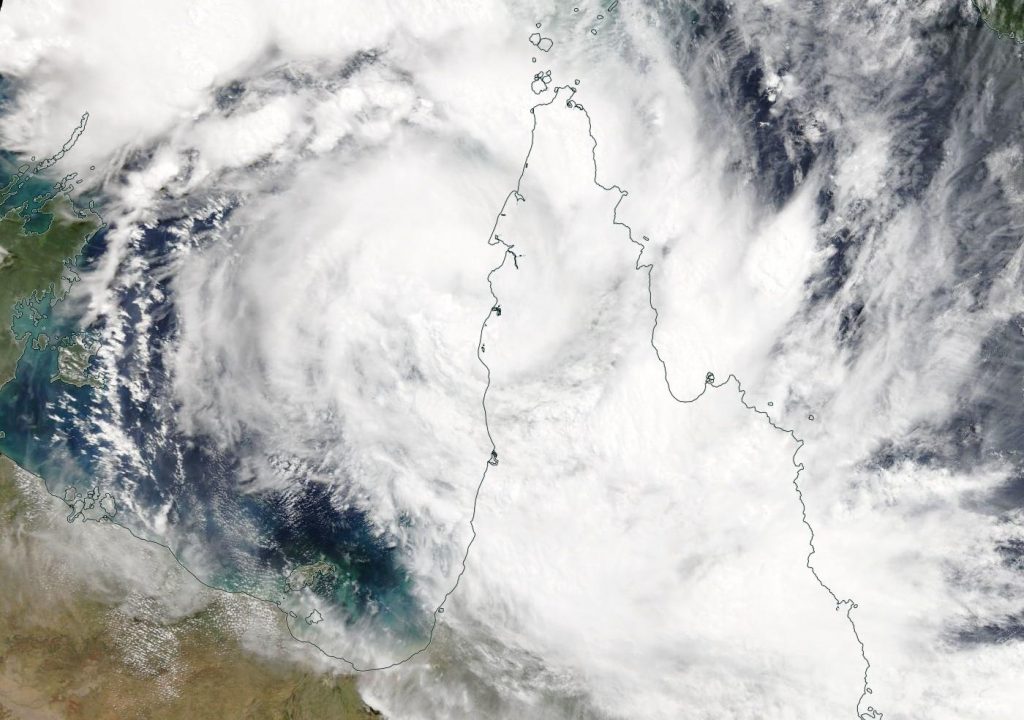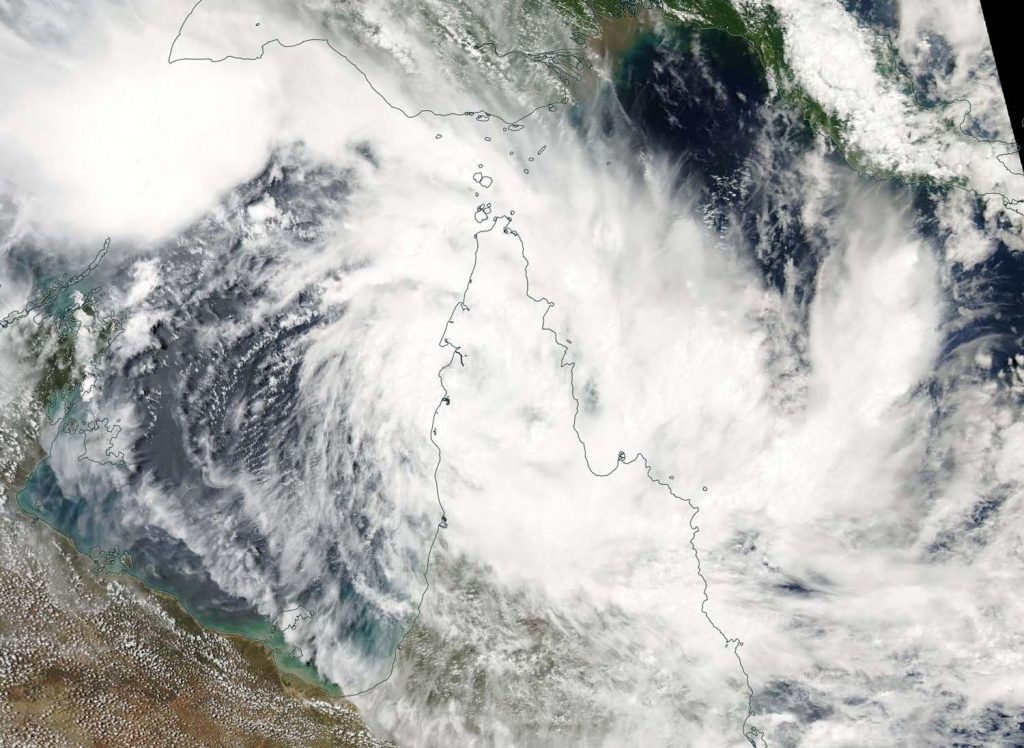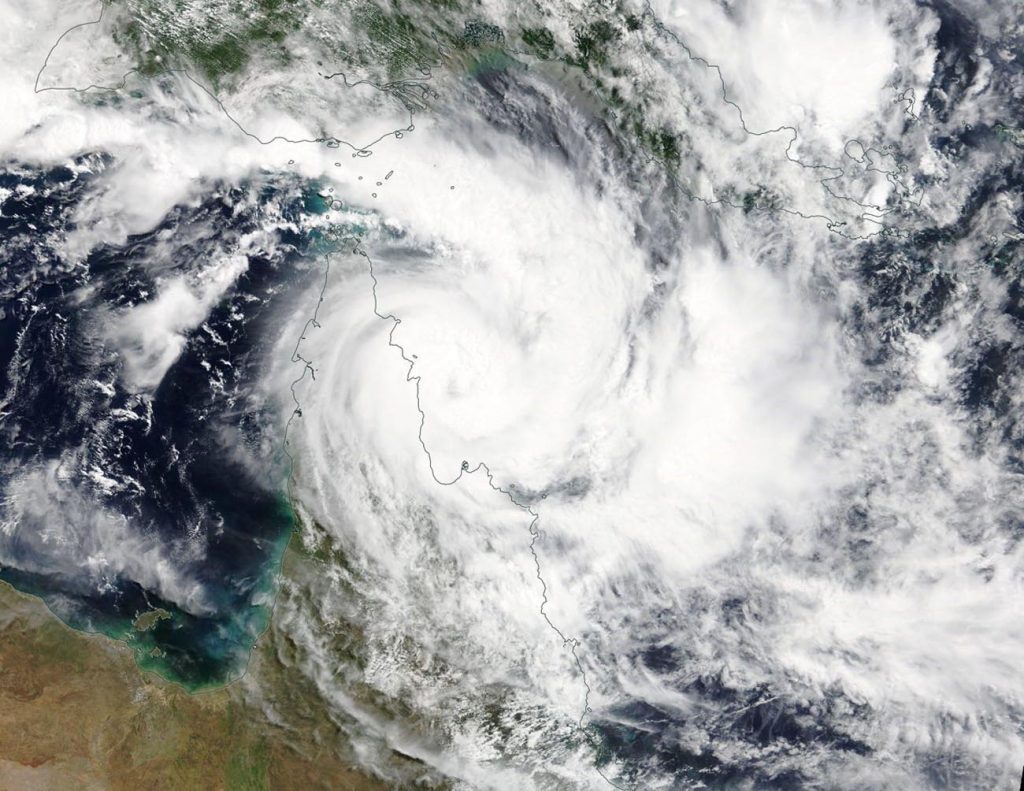March 22, 2019 – Tropical Cyclone Trevor Fills Australia’s Gulf of Carpentaria in NASA Image

Visible imagery from NASA’s Aqua satellite showed Tropical Cyclone Trevor filling up Australia’s Gulf of Carpentaria.
The Gulf of Carpentaria is a large, shallow sea. It is surrounded on three sides by northern Australia and bounded by the Arafura Sea to the north.
Trevor had crossed the Cape York Peninsula on March 21 and moved into the Gulf. On On March 22 the Moderate Resolution Imaging Spectroradiometer or MODIS instrument aboard NASA’s Aqua satellite provided a visible image of Trevor. Satellite imagery revealed that Trevor’s clouds had filled up the Gulf. It showed that bands of thunderstorms circled more tightly around the center of circulation than the previous day.
The Australian Bureau of Meteorology or ABM updated warnings and watches on March 22, 2019. The Warning Zone includes Alyangula in the Northern Territory to Burketown in Queensland, and inland parts of the eastern Carpentaria District and the northwest Gulf Country, including Groote Eylandt, Mornington Island, Borroloola, Robinson River, Wollogorang, McArthur River, Cape Crawford, Creswell Downs, Brunette Downs and Doomadgee. The Watch Zone includes inland parts of the northwest Gulf Country in Queensland and the western Carpentaria and central Barkly Districts in the Northern Territory.
At 8 a.m. EDT (9:30 p.m. Australian Central Standard Time or ACST) on March 22, 2019, maximum sustained winds near Trevor’s center were near 90 miles (150 kilometers) per hour. Trevor was centered near 15.0 degrees south latitude and 138.9 degrees east longitude. That’s about 110 miles (185 kilometers) north or Mornington Island.
ABM noted “Dangerous conditions are expected tonight along the southern Gulf of Carpentaria coast as Severe Tropical Cyclone Trevor approaches. The cyclone is expected to cross the coast during Saturday morning, March 23, between Port McArthur and the Northern Territory/Queensland border.”
Destructive winds, very heavy rainfall and storm surge are expected with this storm. ABM said “Coastal residents between Port Roper and the NT/Queensland Border are specifically warned of a very dangerous storm tide as the cyclone center approaches the coast. Tides will rise significantly above the normal high tide, with damaging waves and very dangerous flooding during Friday night and Saturday. As the cyclone approaches the coast, a storm tide is also expected between the Northern Territory/Queensland border and Burketown. Large waves may produce minor flooding along the foreshore.”
For updated forecasts from the Australian Bureau of Meteorology, visit: http://www.bom.gov.au
By Rob Gutro
NASA’s Goddard Space Flight Center, Greenbelt, Md.



